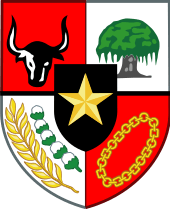Science and technology in Indonesia
Indonesia is not considered as one of the leading countries in science and technology developments. However, there are many examples of notable scientific and technological developments and achievements contributed by Indonesians. Despite being a developing country, Indonesia is one of a handful nations that have developed their own aerospace technology.[1]
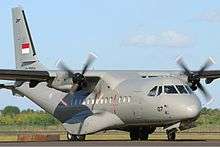
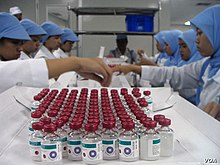
Currently, the republic's Ministry of Research and Technology is the official body in charge of science and technology development in the nation. The government institution dedicated to science and research in the country is the Indonesian Institute of Sciences (Indonesian: Lembaga Ilmu Pengetahuan Indonesia or LIPI). It consists of 47 research centers in fields ranging from social to natural sciences.[2] In 2010, the Indonesian government allocated Rp 1.9 trillion (approximately US$205 million) for research and development—less than 1% of the total state expenditure.[3]
History
Living in an agrarian and maritime culture, the people of the Indonesian archipelago have become well known in some traditional technologies, particularly in agriculture and marine. In agriculture for instance, the people in Indonesia and many other Southeast Asian countries, are famous for paddy cultivation and techniques such as terracing. Local systems of complex irrigation and water management have been developed in the archipelagos. An exceptional example is Subak, the irrigation system of Bali.
The Malay race (which included the Javanese people, Sulawesian, Filipinos and other sub-group from Eastern Indonesia, minus the people from Irian region) from Nusantara is already accomplished sailor since at least 1500 years B.C. During that era the distribution of kapur Barus already reached ancient Egypt.[4] The Malays developed tanja sail several hundred years B.C., which influenced the Arabs to make their lateen sail and the Polynesians to make their crab claw sail. It is an invention of global significance, because of its ability to sail against the wind.[5] They are also made jong sail (junk rig), and by the 2nd century, the junk rig has been adopted by the Chinese as their preferred type of sail.[6][7]
Malays also reached Madagascar in the early 1st millennium AD and colonized it.[8] By the 8th century A.D., they already reached as far as Ghana, likely using the outrigger Borobudur ship and the perahu jong.[9] A Chinese record in 200 AD, describes the K'un-lun Po (meaning "ship/perahu from K'un-lun" - Either Java or Sumatra) as being capable of carrying 600-700 people and 260-1000 tons of cargo.[10][11]
The Konjo, Ara and Lemo-Lemo people from the island of Sulawesi in eastern Indonesia are also well known for their shipbuilding technology. They are renowned for making a wooden sailing vessel called the palari, using a sail system (rigging) known as pinisi.[12] It is a common misunderstanding that the Buginese, Makassar, and Bira people built these vessels, in reality they are just sail them, not the builder.[13]
The Javanese and Malay people, like other Austronesian ethnicities, use a solid navigation system: Orientation at sea is carried out using a variety of different natural signs, and by using a very distinctive astronomy technique called "star path navigation". Basically, the navigators determine the bow of the ship to the islands that are recognized by using the position of rising and setting of certain stars above the horizon.[14]:10 In the Majapahit era, compasses and magnets were used, and cartography (mapping science) was developed: The use of maps full of longitudinal and transverse lines, rhumb lines, and direct route lines traveled by ships were recorded by Europeans, to the point that the Portuguese considered the Javanese maps were the best map in the early 1500s.[15][16]
In architecture, native Indonesians have developed their own vernacular architecture. Some examples of architecturally significant Indonesian buildings are Rumah Gadang of Minangkabau, Tongkonan of Toraja, and omo sebua of Nias. The Omo Sebua is noted for its sturdy yet flexible design which allows it to resist earthquake.
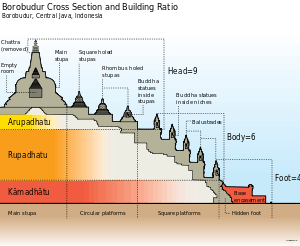
By the 8th century, the Javanese kingdom of Medang Mataram developed an advanced stone mason architectural technology in candi (temple) building. This includes the magnificent Borobudur temple, Prambanan temple, and many other temples. Architectural techniques that have been developed include knobs, indentations and dovetails used to form joints between stones and bind them without mortar. Other significant architectural advancements include: the roof, niches, and arched gateways constructed in the corbelling method.
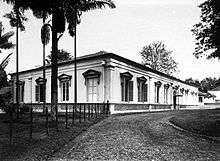
The scientific quest and systematic research in accordance to the modern scientific method began to develop and flourish in Indonesia during the Dutch East Indies period, started in the 19th century. The Dutch East Indies has attracted intellectuals, scientists and researchers. Some notable scientists that conducted most of their important research in the East Indies archipelago are Teijsmann, Junghuhn, Eijkman, Dubois and Wallace. Many important art, culture and science institutions were established in Dutch East Indies. For example, the Bataviaasch Genootschap van Kunsten en Wetenschappen, (Royal Batavian Society of Arts and Sciences), the predecessor of the National Museum of Indonesia, was established in 1778 with the aim to promote research and publish findings in the field of arts and sciences, especially history, archaeology, ethnography and physics. The Bogor Botanical Gardens with Herbarium Bogoriense and Museum Zoologicum Bogoriense was a major centre for botanical research established in 1817, with the aim to study the flora and fauna of the archipelago.
Java Man was discovered by Eugène Dubois in 1891. The Komodo dragon was first described by Peter Ouwens in 1912, after an aeroplane crash accident in 1911 and rumours about living dinosaurs in Komodo Island in 1910. Vitamin B1 and its relation to beriberi disease was discovered by Eijkman during his work in the Indies.
With growing interest in scientific research, the government of the Dutch East Indies established Natuurwetenschappelijke Raad voor Nederlandsch-Indië (Scientific Council of the Dutch East Indies) in 1928. It operates as the country's main research organization until the outbreak of Pacific War in 1942. In 1948 the institute was renamed Organisatie voor Natuurwetenschappelijk Onderzoek (OPIPA, Organisation for Scientific Research).
After the independence of Indonesia, the government continued to nurture the scientific development and pursuit, through government institutions. In 1956 the OPIPA was nationalized as Majelis Ilmu Pengetahuan Indonesia (MIPI, Indonesian Sciences Council). Then in 1962 the government established the Departemen Urusan Riset Nasional (DURENAS, National Research Affairs Department), while MIPI are in charge of founding and operates various National Research Institutes. And in 1966 the government changed the status of DURENAS into Lembaga Riset Nasional (LEMRENAS) (National Research Institute). In August 1967 the government dissolved LEMRENAS and MIPI and established the current Indonesian Institute of Sciences (LIPI), which runs the scientific efforts and operations that was previously conducted by LEMRENAS and MIPI.[17]
One of four pillars of Vision of Indonesia 2045 is the "human development and the mastery of science and technology". This Indonesian ideal that set the goal for the country by its centennial in 2045, duly recognised and realised the importance of science and technology for the future of the nation.[18]
Institutions
Among the main research and development institutions in the country, are:
- The Ministry of Research and Technology (Indonesian: Kementerian Riset dan Teknologi Republik Indonesia, or Kemenristek), is a government ministry that has the task of conducting affairs in the field of research, science and technology.
- The Indonesian Institute of Sciences (Indonesian: Lembaga Ilmu Pengetahuan Indonesia, or LIPI), which consists of 47 research centers in fields as diverse as physics, chemistry, biology, economics, political science or the humanities and social sciences.
- The National Institute for Atomic Energy (Indonesian: Badan Tenaga Nuklir Nasional, or BATAN) responsible for three nuclear reactors used for research purposes and which are located in Bandung, Banten and Sleman.
- The Agency for Technology Assessment and Application (Indonesian: Badan Pengkajian dan Penerapan Teknologi, or BPPT) which works with the government to establish national policies.
- The National Institute of Aeronautics and Space (Indonesian: Lembaga Penerbangan dan Antariksa Nasional, or LAPAN), a space agency created in 1963.
- The Geospatial Information Agency (Indonesian: Badan Informasi Geospasial, or BIG), responsible for surveys and mapping.
- The National Standardization Body (Indonesian: Badan Standardisasi Nasional, or BSN), member of the International Organization for Standardization.
Indonesia has many universities. Among the most renowned are the University of Indonesia, the Bandung Institute of Technology and Gadjah Mada University, which offer science courses.[19]
Main areas
Biotechnology
In October 1994, the State created the Biotechnology Consortium (IBC) whose aim is to develop and use the contributions of biotechnology for the benefit of the population, the country, and the conservation of the environment. Around 34 government institutions work in the biotechnology sector. In 2005, the country hosted the BINASIA-Indonesia National Workshop to promote investment in this sector.
Food processing technology
Indonesians have also made various advances in food technology, due to the tropical climate in Indonesia teeming with various microbes. Indonesians have developed traditional knowledge in fermentation techniques, which resulted in the development of fermented foods such as tempeh, oncom, tapai, and also beverages like brem and tuak. Tempeh is made through natural culturing and a controlled fermentation process, which employs the fungi Rhizopus oligosporus or Rhizopus oryzae,[20] The fungi binds soybeans into a cake form. It has higher content of protein, dietary fiber, and vitamins.[21]
Construction technology
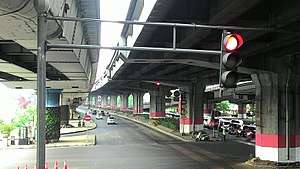
There are some notable technological developments made by natives in modern Indonesia (post independence). In the 1980s, Tjokorda Raka Sukawati, an Indonesian engineer, invented a road construction technique called Sosrobahu. It became popular afterwards and has since been widely used by many countries. The Sosrobahu technique allows long stretches of flyovers to be constructed above existing main roads, therefore minimizes disruptions to the heavy traffic. It involves the construction of horizontal supports for the highway beside the existing road, which is then lifted and turned at a 90 degree angle before being placed on the top of the vertical supports. This forms the flyover pylons. The technology was exported to the Philippines, Malaysia, Thailand and Singapore. In 1995, a patent was granted to Indonesia.[22]
The Cakar ayam construction, or literally means "chicken claw construction" is a technical engineering to create a more stable foundation by employing concrete plate supported by pipes planted deep into the ground acted as "claws", invented by Prof. Dr. Ir. Sedijatmo in 1961. The technique can be applied on structures, roads and runways. The technical principle consist of a concrete plate foundation is supported and secured to the ground by pipes as "claws", which allows a more stable construction, enable to build structure on soft wet ground such as on swamps. The technique allowed the structure to be more rigid, stable and more durable against uneven weight distribution or uneven land declining.[23]
Aerospace and transportation
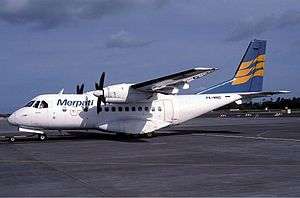
Indonesia has a long history in developing military and small commuter aircraft. In fact, it is the only country in Southeast Asia to produce and develop its own aircraft. Its state-owned aircraft company (founded in 1976), Indonesian Aerospace (Indonesian: PT. Dirgantara Indonesia) has also produced aircraft components for Boeing and Airbus. Indonesian Aerospace, together with EADS CASA of Spain, also developed the CN-235 aircraft, which has been exported to many countries. B. J. Habibie, a former Indonesian president, played an important role in this achievement. While active as a professor in Germany, Habibie conducted many research assignments, producing theories on thermodynamics, constructions, and aerodynamics, known as the Habibie Factor, Habibie Theorem, and Habibie Method respectively.[24] Indonesia also hopes to manufacture the South Korean KAI KF-X fighter.[25] The latest development is N-219, a twin-engine 19-seater commuter airplane.[1]
Wiweko Soepono, a former Garuda Indonesia director, is also known as inventor of the modern two-man cockpit design (Forward Facing Crew Cockpit/FFCC) for Garuda Indonesia Airbus A300 aircraft.[26]
Furthermore, Indonesia has a well-established railway industry with its state-owned train manufacturing company, the Indonesian Railway Industry (Indonesian: PT. Industri Kereta Api), located in Madiun, East Java. Since 1982, the company has been producing passenger train wagons, freight wagons and other railway technologies which it has exported to many countries such as Malaysia and Bangladesh.[27]
Information, communication and digital technology
Indonesia was one of few countries during the 1970s to own their own communication satellite. Since 1976, a series of satellites named Palapa were built and launched in the United States for Indonesia's state-owned telecommunication company, Indosat.
In Internet technology, an Indonesian information technology scientist, Onno W. Purbo developed RT/RW-net, a community-based internet infrastructure which provides affordable Internet access to people in rural areas.[28]
In 2010s digital economy began to develop and continue to thrive in Indonesia. Notable example include Gojek; started in 2010 as a call center to connect consumers to courier delivery and two-wheeled ride-hailing services. Today, it grow into a Southeast Asian on-demand multi-service platform and digital payment technology group.[29] Another digital economy and service developed in Indonesia includes online marketplaces such as Tokopedia and Blibli.
Robotics
Indonesian students have a good record of winning many international competitions in science and technology. In 2009, the robotics team from Indonesian Computer University won the gold medal in the “open fire-fighting autonomous robot” category at the Robogames in San Francisco, United States.[30] In 2010, they successfully defended their title. Two years earlier, another robotics team from the Tenth of November Institute of Technology won third place in Robocon 2008, a robotics contest hosted by the Asia-Pacific Broadcast Union (ABU) in Pune, India.[31]
Notable people
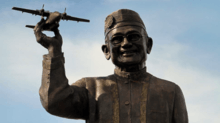
- B. J. Habibie, German-trained professor in aerospace engineering. Produced theories known as the Habibie Theorem, Habibie Factor, and Habibie Method. Later he became the third president of Indonesia.
- Bambang Hidayat, former Vice-President of the International Astronomical Union.
- Onno W. Purbo, Internet and information technology expert. Well known for his design on RT/RW-net, a community-based Internet solution for poor people.
- Yohanes Surya, physics scientist and professor.
- Moedomo Soedigdomarto, one of the first Indonesians to obtain a Ph.D. in mathematics.
See also
External links
References
- Marguerite Afra Sapiie. "N-219: Propelling Indonesia's aerospace industry". The Jakarta Post.
- "About LIPI". Indonesian Institute of Science. Archived from the original on 27 May 2013.
- Indonesia to increase R&D budget
- Nugroho, Irawan Djoko (2011). Majapahit Peradaban Maritim. Suluh Nuswantara Bakti. ISBN 9786029346008.
- Hourani, George Fadlo (1951). Arab Seafaring in the Indian Ocean in Ancient and Early Medieval Times. New Jersey: Princeton University Press.
- Shaffer, Lynda Norene (1996). Maritime Southeast Asia to 1500. M.E. Sharpe.
- Johnstone, Paul (1980). The Seacraft of Prehistory. Cambridge: Harvard University Press. ISBN 978-0674795952.
- Dewar, Robert E.; Wright, Henry T. (1993). "The culture history of Madagascar". Journal of World Prehistory. 7 (4): 417–466. doi:10.1007/bf00997802. hdl:2027.42/45256.
- Dick-Read, Robert (2005). The Phantom Voyagers: Evidence of Indonesian Settlement in Africa in Ancient Times. Thurlton.
- Christie, Anthony (1957). "An Obscure Passage from the "Periplus: ΚΟΛΑΝΔΙΟϕΩΝΤΑ ΤΑ ΜΕΓΙΣΤΑ"". Bulletin of the School of Oriental and African Studies, University of London. 19: 345–353. doi:10.1017/S0041977X00133105 – via JSTOR.
- Reid, Anthony (1988). Southeast Asia in the Age of Commerce. New Haven: Yale University Press.
- The Indonesian Phinisi
- Sailing - Bira - South Sulawesi, by Horst Liebner
- Liebner, Horst H. (2002). Perahu-Perahu Tradisional Nusantara. Jakarta.
- Jones, John Winter (1863). The travels of Ludovico di Varthema in Egypt, Syria, Arabia Deserta and Arabia Felix, in Persia, India, and Ethiopia, A.D. 1503 to 1508. Hakluyt Society.
- "Majapahit-era Technologies". Nusantara Review. 2 October 2018. Retrieved 11 June 2020.
- "Selamat Ulang Tahun, LIPI!". lipi.go.id (in Indonesian). Retrieved 12 March 2020.
- "4 Pilar Visi Indonesia 2045". indonesiabaik.id (in Indonesian). Retrieved 12 March 2020.
- Post, The Jakarta. "ITB, UGM, UI named top three universities in Indonesia". The Jakarta Post. Retrieved 12 March 2020.
- "What is tempeh starter?". Tempeh.info.
- Bennett, Beverly Lynn; Sammartano, Ray (2008). The Complete Idiot's Guide to Vegan Cooking. Penguin. p. 17. ISBN 9781592577705. Retrieved 6 May 2011.
- Sosrobahu Bertumpu di Atas Piring
- "Pondasi Cakar Ayam". ilmutekniksipil.com (in Indonesian). 12 October 2012.
- Habibie receives honorary doctorate Archived 5 March 2016 at the Wayback Machine
- Sihaloho, Markus Junianto (16 July 2010), "Indonesia Angling to Help Build S. Korean Jet Fighter", The Jakarta Globe, Jakarta, archived from the original on 18 September 2012, retrieved 18 November 2010
- Wiweko Perancang Pesawat Indonesia Pertama
- PT. INKA's Products
- Onno W. Purbo: Opening windows for knowledge
- "Tentang Kami | Gojek". www.gojek.com. Retrieved 12 March 2020.
- A Man and His Robot Make the Most of a Golden Opportunity
- THE ROBOT TEAM OF ITS WON THE THIRD PLACE IN AN ASIA PACIFIC COMPETITION

